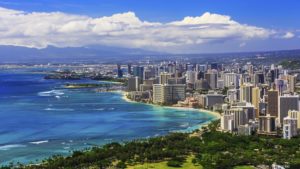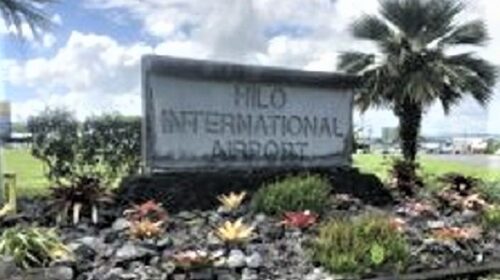DBEDT predicts accelerated economic growth in 2018 for Hawaii
The Department of Business, Economic Development and Tourism (DBEDT) released its second quarter 2018 Statistical and Economic Report, which shows Hawaii’s economy started to accelerate during the first quarter of 2018 and the economic growth in 2018 will be better than previously projected. The accelerated projection is due to the strong performance of tourism and the continued improvement in the labor market.
During the first quarter of 2018, Hawaii continued to be the best labor market in the nation with an unemployment rate at 2 percent, which was the lowest in the nation and the lowest rate in Hawaii’s history. Statewide employment, the number of people who are either employed for pay or self-employed, was at a record high during the first quarter of 2018. Non-agriculture payroll jobs increased by 8,800 during the same period. Visitor arrivals registered the best quarter during the first quarter of 2018 with 2.4 million visitors coming to Hawaii by airplanes. The corresponding nominal visitor expenditures increased 10.1 percent during the first quarter of 2018. Total number of air seats on scheduled flights to Hawaii, a leading indicator of the tourism industry, increased 10.6 percent during the first quarter of 2018 and is expected to increase by 7.4 percent during the rest of 2018.
“Tourism, professional services, and the healthcare industries continue to be the drivers of our economic growth,” said DBEDT Director Luis P. Salaveria. “These three industry sectors added more than 10,000 jobs during the first quarter of 2018.”
The report also shows industries which had challenges in job growth. For example, state government lost 1,700 jobs, and the retail trade lost 1,000 jobs during the first quarter of 2018, as compared with the numbers a year earlier. The loss of jobs in state government may be attributed to the difficulties filling vacant positions with the limited labor supply in the state.
Statistics for construction were mixed during the first quarter of 2018. The value of statewide private building permits decreased 23.9 percent with most of the decrease occurring in Honolulu County with a 37.2 percent decrease during the first quarter of 2018. Honolulu accounted for 56.3 percent of the total statewide private construction value. Maui County also saw decreases in private building permits value at 9.2 percent, while private building permit values for Hawaii and Kauai counties increased at 15.1 percent and 28.7 percent, respectively.
“The real estate market continued performing well during the first four months of 2018. Both sales and median prices of homes increased for all the counties during the first four months of 2018 with the exception on the median condo price on Kauai, which decreased by 1.8 percent,” said Chief State Economist Dr. Eugene Tian. “On Oahu, the median price for single family homes increased 4.6 percent and the median price for condos increased by 7.5 percent during the first four months of 2018. Investment in residential real estate by out-of-state residents is still strong. During the first quarter of 2018, 28.1 percent of the homes were sold to out-of-state residents, the highest increase since the second quarter of 2012.”
The most recent economic forecasts by more than 50 top economic research organizations (the Blue Chip Economic Indicators), released on May 10, reported that the U.S. and the world economies will experience steady growth in 2018 and 2019, and the U.S. economy will experience accelerated growth at 2.8 percent in 2018. Hawaii will benefit from the accelerated U.S. economic growth since more than 61 percent of Hawaii’s visitor spending were derived from U.S. mainland visitors. The U.S. economy will continue to grow at 2.6 percent in 2019, according the consensus forecast.
DBEDT revised the visitor industry forecast upward with visitor arrivals now growing at 6 percent for 2018, 1.2 percent for 2019 and 1.4 percent for 2020 and 2021. Growth of visitor expenditures will be at 8.6 percent for 2018, 2 percent for 2019, and 3.5 percent for 2020 and 2021.
DBEDT revised its projection for Hawaii’s economic growth, as measured by the real gross domestic product (GDP), upward from the first quarter 2018 projection to 1.9 percent for 2018, 1.6 percent for 2019, and 1.4 percent for 2020 and 2021.
DBEDT revised its projection on the non-farm payroll job count upward to 1.2 percent in 2018, 0.9 percent for 2019 and 2020, 0.8 percent for 2021. The unemployment rate projection now is lower for 2018 at 2.2 percent and will gradually increase to 3.4 percent by 2021.
DBEDT revised the nominal personal income growth rates upward from the previous quarter forecast to 4 percent for 2018, 3.9 percent for 2019, 4 percent for 2020 and 2021. DBEDT expects consumer inflation, as measured by the Honolulu Consumer Price Index, will be higher than previously projected, now at 2.6 percent for 2018, and will gradually increase to 3.1 percent by 2021. Growth of real personal income was also revised upward from the previous quarter forecast and is now 1.7 percent for 2018, and will be between 1.2 percent and 1.5 percent for the next few years.
The DBEDT Quarterly Statistical and Economic Report contains 136 tables of the most recent quarterly data on Hawaii’s economy as well as narrative explanations of the trends in these data.




